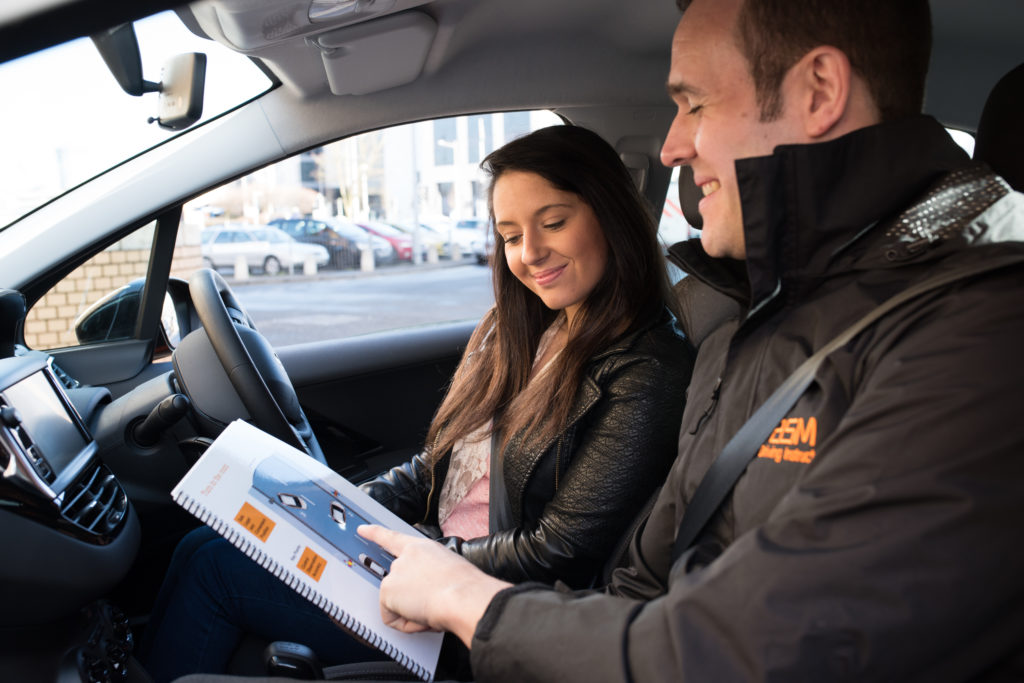Everything You Need To Know with BSM
T Junctions For
Beginners

The Beginners Guide to Mastering Every T Junction
T junctions are prevalent on roads across the UK. From the windy roads of Devon and Cornwall, to bustling city centres, they don't always look the same. However, if you take these tips into your next T junction venture you will be confident when approaching any type – no matter how tricky, obscured, or time-consuming it may be.
What is a T Junction?
Look at a capital 'T'. Imagine the top of the 'T' as the perpendicular road, and the vertical line as the road you are on. If you move upwards along this line, you will come to the top of the 'T' – giving you the option to turn left or right.
You will often see the end of the junction with dashed lines, these indicate where your car should stop when required. This will ensure you are not obstructing the road flowing from left to right in front of your vehicle.
Turning Left at T Junctions
Let's start off with the easier turn when approaching a T junction. We will work through the main observations to make, and the simple steps you should follow to safely navigate the left turn. As you approach a T junction, you will see the double dashed lines up ahead. If you are turning left, it's important to make your intentions known early. Check your mirrors and signal. The next thing to do when nearing the junction is to position your vehicle to the left, and look out for incoming traffic. The road may be fast, so it's important that you judge the speed of the road and take off from your position at the right time.
Turning Right at T Junctions
Turning right is a little bit more of a challenge at a T junction. You will need to cross over the road, which increases the amount of traffic to keep an eye on. The pace of the road is vital once again. Once you gauge this, you can begin to assess the situation from both sides. It begins in the same way as turning left; mirror and then signal to the right before positioning that way when you reach the end of the junction.
From this position, you will need to assess the two lanes of traffic in front of you. The most important rule is to double check the right side. A major risk is created if you start moving off once the coast is clear to your left because in the time you have looked away, the scene may have changed completely to your right. As soon as you are confident, it's your chance to emerge and make the turn.
Obstructions and Blind Spots to be Aware of
Some T junctions will not make it easy for you. Blind bends just after the junction, trees that obscure your view, or parked cars in your way. This is when a vital skill is needed: the 'peep and creep'. To stay safe and accurately assess the road whatever way you are turning, you can slowly edge your way into the road to get a better view. 'Peep and creep' is just a great way of feeling confident that no vehicles are coming. One major thing to check is for motorcyclists and cyclists. These can be difficult to spot on your initial check and will need extra attention at T junctions.
What do I do at a stop sign?
Some T junctions have stop signs at the end of them. It is mandatory to stop at these junctions. Once you have fully come to a stop, however, you will just need to follow the same tips as before. Make your observations, check every angle, and continue nailing the T junction as you would normally.
Mastering every T Junction
This important area of your driving life can be made easy with these few tips. No matter how shrouded or busy the next T junction you face is, you can be sure to complete it with ease. As long as you remember to check your mirrors, signal your intentions, and assess the road, you will gain confidence when facing any T junction. Discover more of our driving guides for beginners here.